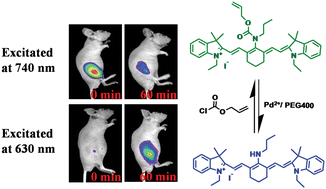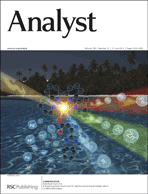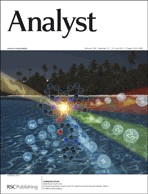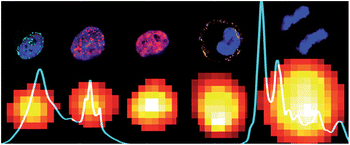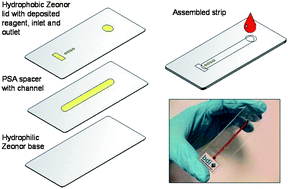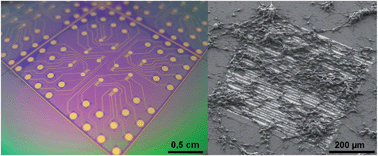
Wang and Schultz, Analyst, 2013, 138, 3150-3157
The latest issue of Analyst is now online and ready for you to enjoy. We have three new covers and a couple of HOT papers free for you to read.
On the outside cover is an image from a paper by Zachary Schultz and Hao Wang from the University of Notre Dame, USA, showing functionalised nanoparticles detected with surface-enhanced Raman scattering (SERS) and Tip-enhanced Raman scattering (TERS) using streptavidin and biotin as a model system for protein-ligand binding. The researchers examined the chemical origin of enhanced signals from SERS and TERS detection and observed that different sizes of functionalised nanoparticles show changes in intensities in both types of measurements.
The chemical origin of enhanced signals from tip-enhanced Raman detection of functionalized nanoparticles
Hao Wang and Zachary D. Schultz
Analyst, 2013,138, 3150-3157
DOI: 10.1039/C3AN36898J

Yun et al., Analyst, 2013, 138, 3196-3200
Our inside front cover features a study on digital imaging of cultured cells enhanced by augmented reality technologies. Won Gu Lee and colleagues from Seoul National University, South Korea, present a new method to look at specimens under the microscope using augmented indicators. This new technique enables observation of long term live cells and identification of the exact location of individual cells within a biological sample.
Microscopic augmented-reality indicators for long-term live cell time-lapsed imaging
Kyungwon Yun, Jungman Chung, Yong Park, Byungjoo Lee, Won Gu Lee and Hyunwoo Bang
Analyst, 2013,138, 3196-3200
DOI: 10.1039/C3AN00124E

Ishimoto et al., Analyst, 2013, 138, 3158-3162
Finally, our outisde back cover showcases research on the simplification of conventional neuraminidase inhibitor assays. Hideaki Hisamoto and his group at Osaka Prefecture University, Japan, successfully integrated the assay into a single step operation using a combinable poly(dimethylsiloxane) (PDMS) capillary sensor array.
Integration of neuraminidase inhibitor assay into a single-step operation using a combinable poly(dimethylsiloxane) capillary sensor
Tadashi Ishimoto, Kaede Jigawa, Terence G. Henares, Tatsuro Endo and Hideaki Hisamoto
Analyst, 2013,138, 3158-3162
DOI: 10.1039/C3AN36785A
Now take a look at the selected HOT papers below. They will be free to read until May 30th.
Tagging the rolling circle products with nanocrystal clusters for cascade signal increase in the detection of miRNA
Jingjing Yao, Kenneth Flack, Liangzi Ding and Wenwan Zhong
Analyst, 2013,138, 3121-3125
DOI: 10.1039/C3AN00398A
Isotachophoresis with ionic spacer and two-stage separation for high sensitivity DNA hybridization assay
Charbel Eid, Giancarlo Garcia-Schwarz and Juan G. Santiago
Analyst, 2013,138, 3117-3120
DOI: 10.1039/C3AN00374D
